This article will outline the process I took to establish a native garden in a narrow bed behind my garage, including clearing and preparing the site (which was covered in invasive plants), choosing a general design and selecting plants, and finally doing the planting and maintaining the garden through the first year and now its progress in its second year.
The site is on the west side of my garage and doesn’t get sun until close to midday at most points of the year. But it then gets direct sun for the entire rest of the day, including the harsh summer afternoon sun, but a fence limits it from the evening on. Because of this, I consider it to be full sun (6+ hours) even though it doesn’t get as many total hours of sun as some other sites. Overall it is a very dry site.
Removing the Invasive Plants (Vinca, Wintercreeper and Ivy)
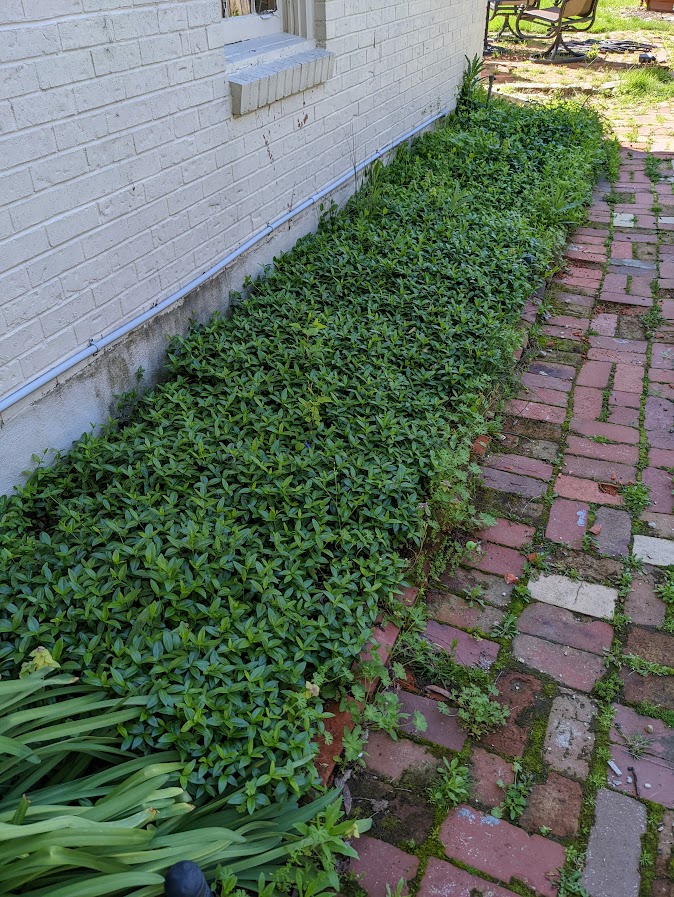
Beforehand, this garden was filled with invasive groundcovers that contributed little to local wildlife, primarily vinca (periwinkle) and wintercreeper. Vinca was the dominant species in the area, and it’s a vining plant that typically forms dense colonies that prevent anything else from gaining a foothold. It’s worth noting that I did find a bit of native annual carolina geranium in there too, but that pops up in so many other places in the yard that I didn’t worry about trying to move or save it.
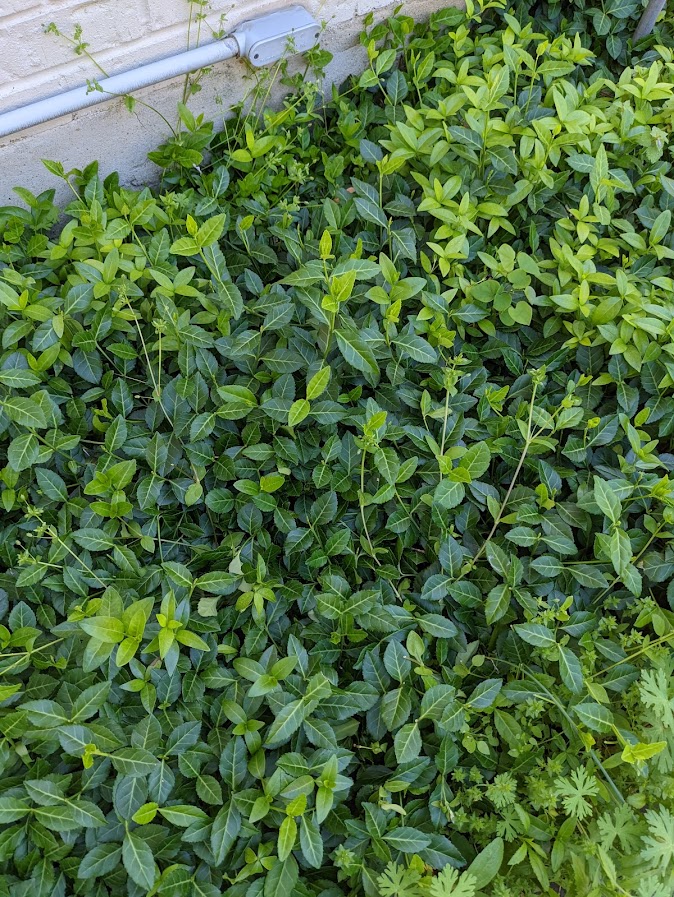
The job of removing these plants was a tough one, as vinca is difficult to eradicate. I wanted to avoid having to use any herbicides due to their environmental impact, and I assumed this would be feasible given the small size of the garden. That turned out to be true, but not without some significant effort and sweat!
The first step of removal was a whole lot of hand-pulling. The vinca roots are deep and the foliage dense and intermingled so I used a couple of hand tools to help cut away the masses and get closer to the roots.

But if I stopped there, the vinca and other invasives would have come roaring back, so the next step was sheet mulching. I set down sheets of wet newspaper and then covered it up with mulch. Hand pulling followed by sheet mulching is a great combination to get rid of aggressive invasive without resorting to herbicides, (and this method has worked for me with English ivy too).
Selecting My Native Plants for This Narrow Garden
While I was in the process of invasive removal, I had already started to plan what I would be planting to replace them. Overall, I knew I wanted blooms in more than one season, especially spring and fall, to help pollinate my nearby vegetable garden and to help early and late season butterflies and moths.
How to Make a Native Garden Look Intentional and Designed
My other consideration was for this to be less of a wild-looking landscape and more one that looked more intentionally designed.
Don’t get me wrong, I love naturalized gardens and think they have many benefits both ecological and practical, but I also believe that in order to help native plants reach a wider gardening audience, it’s important to show that they can be used to make more “traditional” looking gardens as well.
In this case, it’s a small area along a footpath and right next to my garage, so it is quite visible and a good candidate for this type of design.
Next was figuring out how to arrange the plants. I was dealing with a very narrow area at 3 feet deep, so although I thought that tall plants would look nice up against the brick wall of my garage, they would not be ideal because they’d be likely to topple over.
I also wanted to avoid having plants too close to the garage wall which could trap moisture against it. Shorter, neater perennials, then, would likely be a better choice as they won’t take spill over the edges either.
With the depth of only 3 feet, I also decided it was too narrow to have a front and back row of plants. So instead I decided to utilize a sort of zig-zag pattern with plants alternating slightly closer to the back or the front of the garden, with repetition for a strong statement of intentionality.
So with that decision made, I needed to choose my plant species. Despite the appeal of packing in lots of plants for variety and biodiversity, a key for looking more intentional is planting fewer plants, but massed. In addition to the design, considerations, this also helps pollinators find them more easily.
With the zig-zag pattern, I could still use my design instincts to some degree, with a taller plant going in the spots closer to the back of the garden and the garage wall. I would then use a smaller plant in the spots closer to the front and the walkway.
I also chose to add one more element to the design, organizing it around a smaller, neat-looking native grass. I believe grasses are still underutilized in native plantings but are a crucial part of prairie ecosystems, and it’s also common to see nonnative and even invasive grasses used for their ornamental qualities even though there are native alternatives that I believe are just as attractive.
In this case I thought that purple love grass (eragrostis spectabilis) would be a perfect fit for my concept, due to its small stature and well-behaved nature (1-2′ tall and 1-1.5′ wide), but also its beautiful purple/pink color in late season which I think would make a striking statement. It also thrives in dry conditions (like this garden) and its roots will also help fill space and help the other plants grow straighter.
For the taller plant in the back spots of the pattern, I chose stiff goldenrod (solidago rigida), for its height and growth habit as well as its status as a keystone species serving as a host plant a huge number of caterpillar species and feeding pollinators late in the season.
The shorter plant I chose for the front spaces was penstemon hirsutus (hairy beardtongue), due to its low growing and sturdy growth habit and its spring blooming nature.
(Other plants I considered included butterfly milkweed, little bluestem, lanceleaf coreopsis, mountain mint, perennial black-eyed susan, and robin’s plantain.)
I first bought a few plugs of the penstemon at my local Audubon’s native plant sale, and got purple lovegrass from a local native plant seller. I started my stiff goldenrod from seed in pots indoors, and successfully transplanted one, but later learned that I mixed plants up in the other location and ended up with a sneezeweed (helenium autumnale) plant. I moved that to another garden and luckily found a cheap gallon pot of the goldenrod at a discount so I didn’t lose any time there.
Here are some more progress pics!
Right After Pulling Invasive Plants and Before Preparing Site
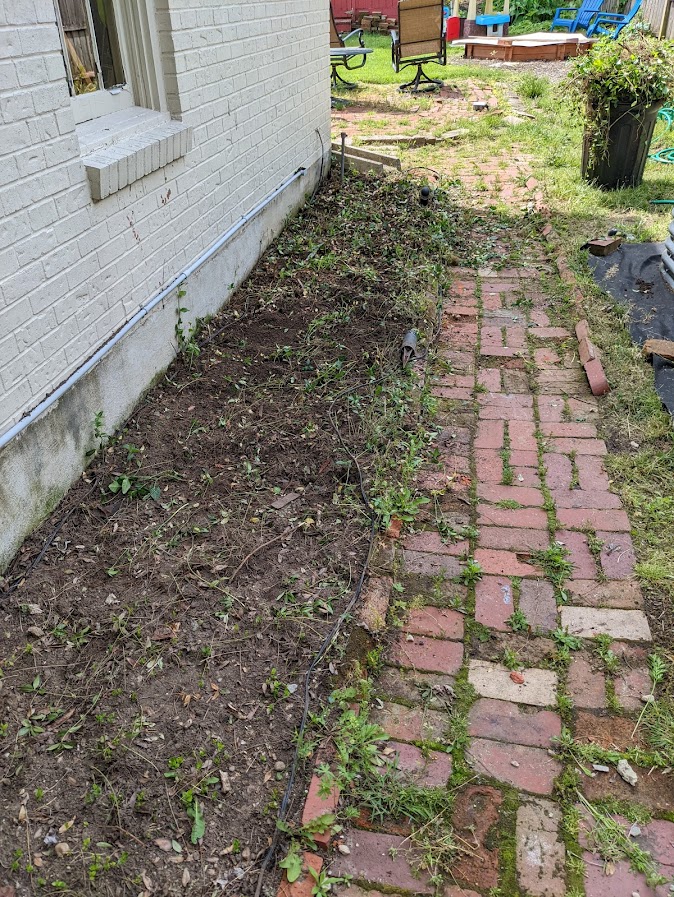
Right After First Planting Phase

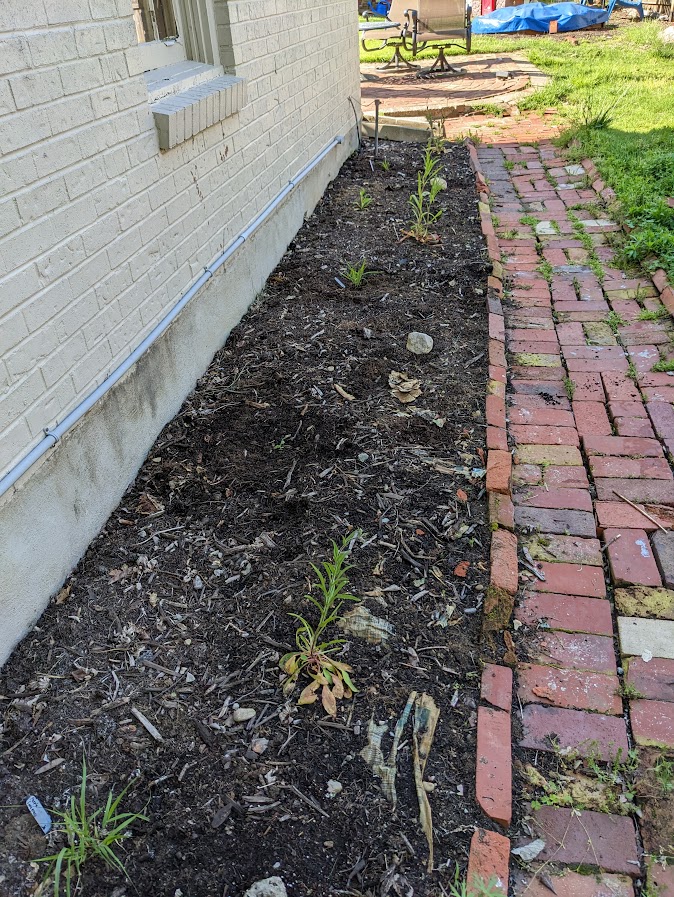
Progress in July of the First Year
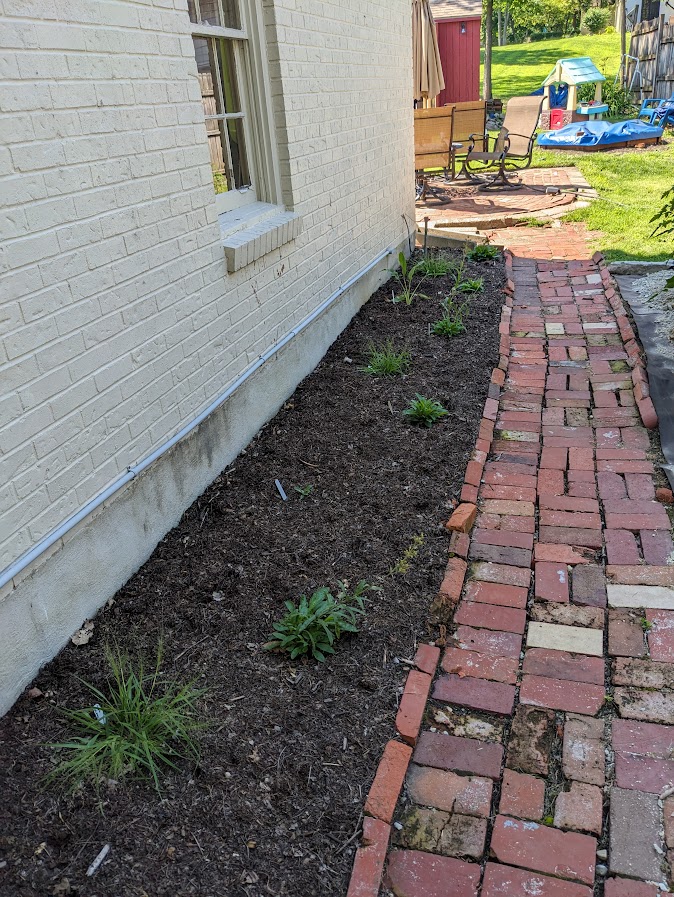

Progress: Year 2 Spring
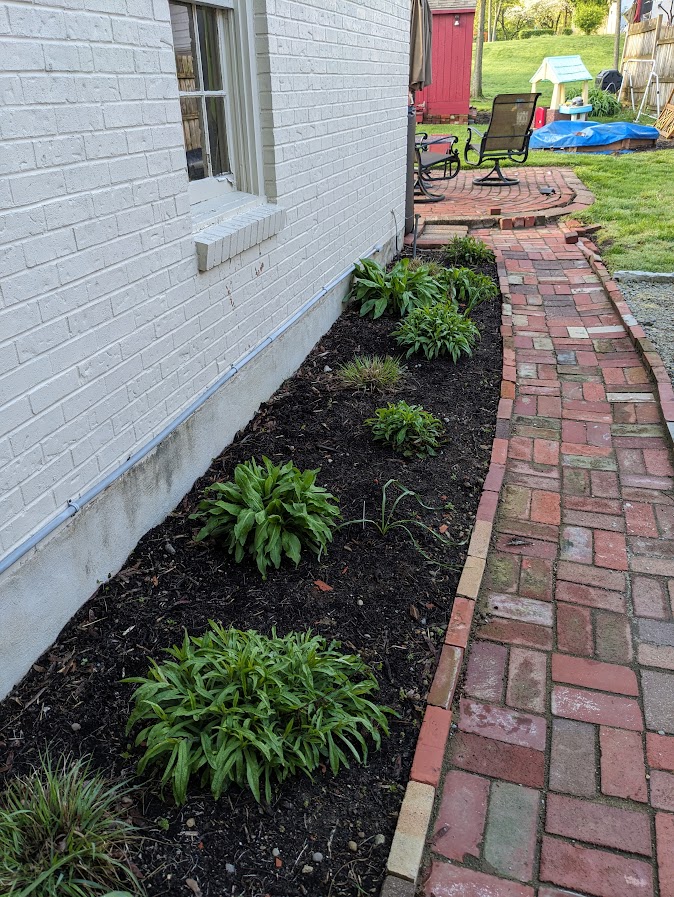
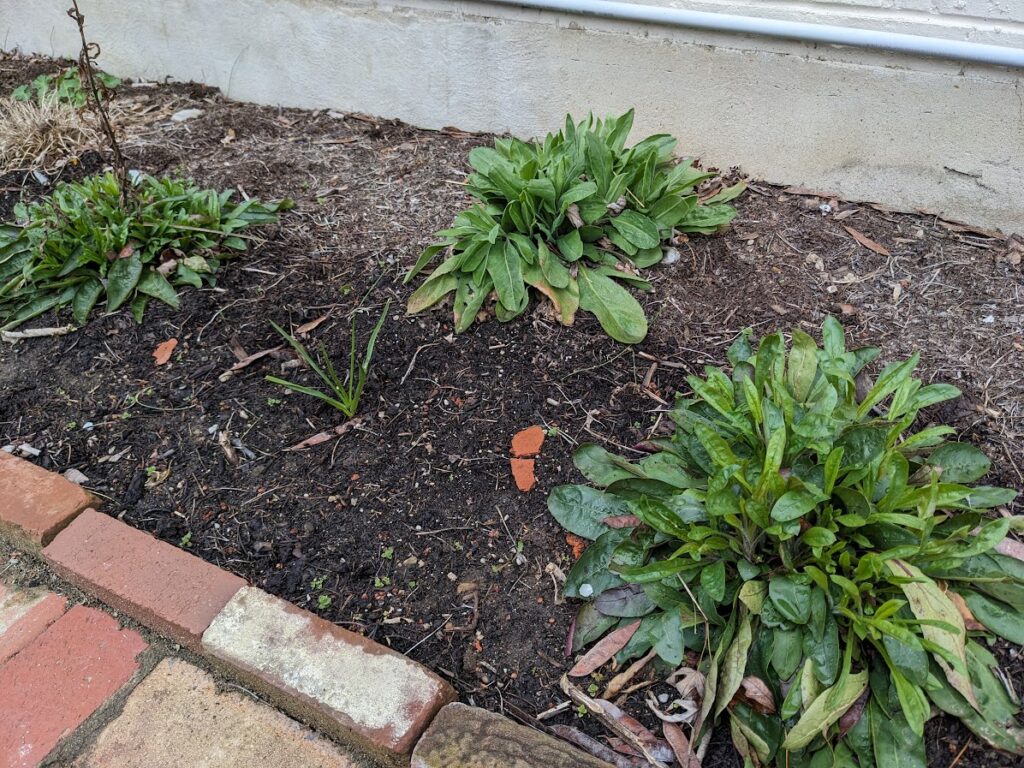
It was rewarding to know that I grew at least a small bit of the garden from seed myself (the goldenrod). It was tiny when I first transplanted it, and worked on its roots for most of the first year. But late in the season it really started to take off!
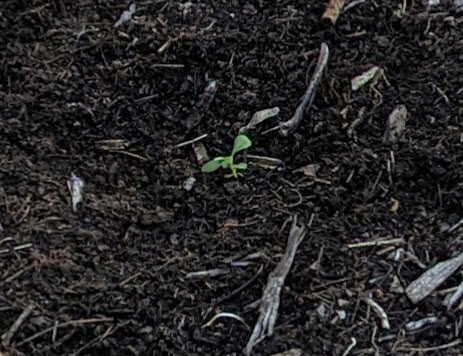
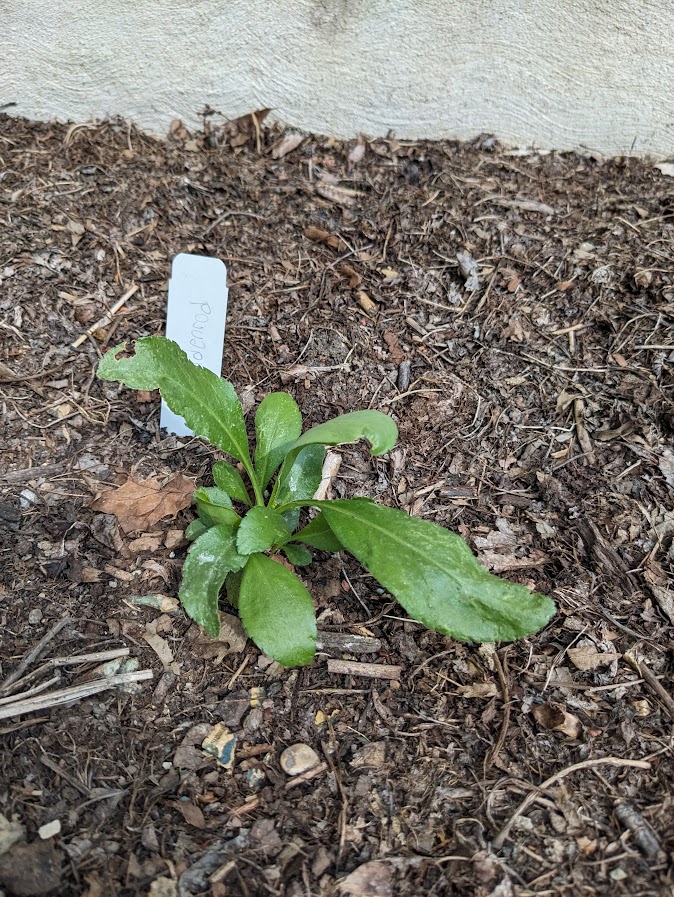
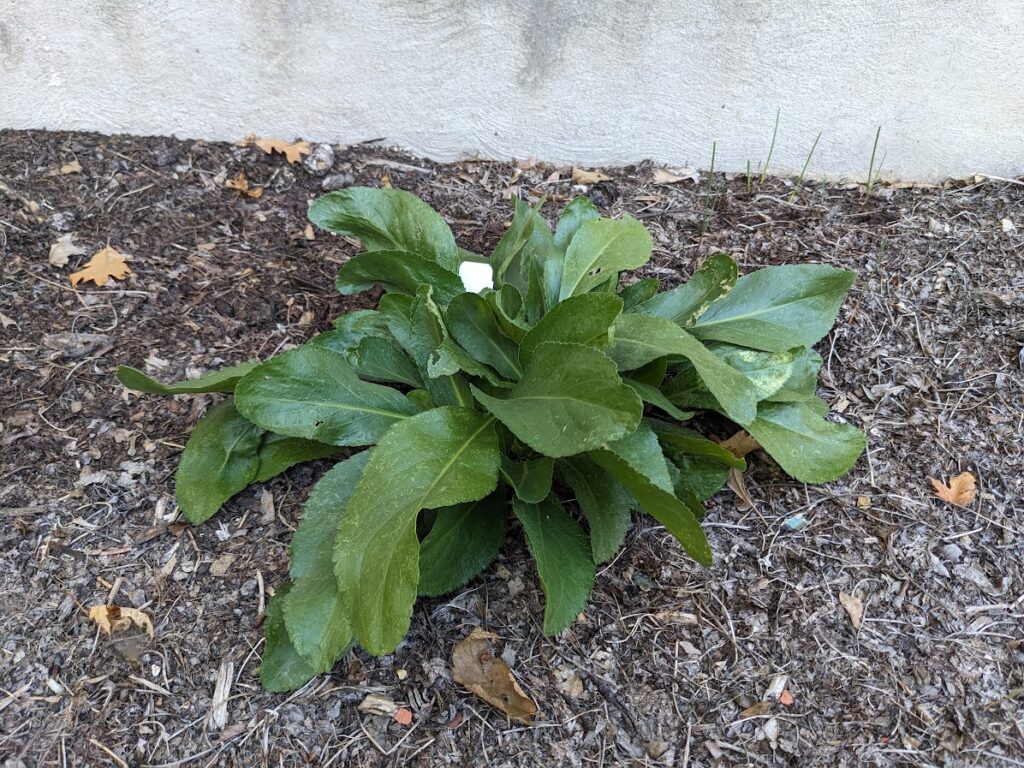
Leave a Reply